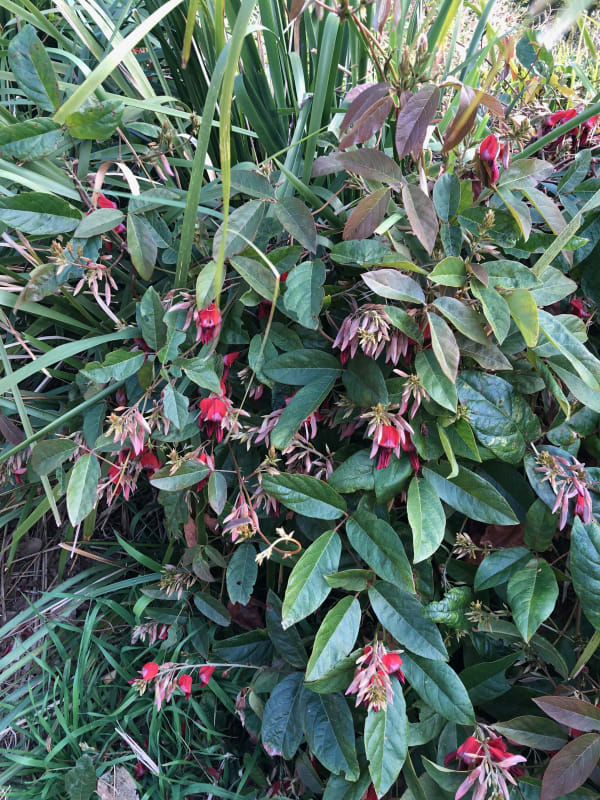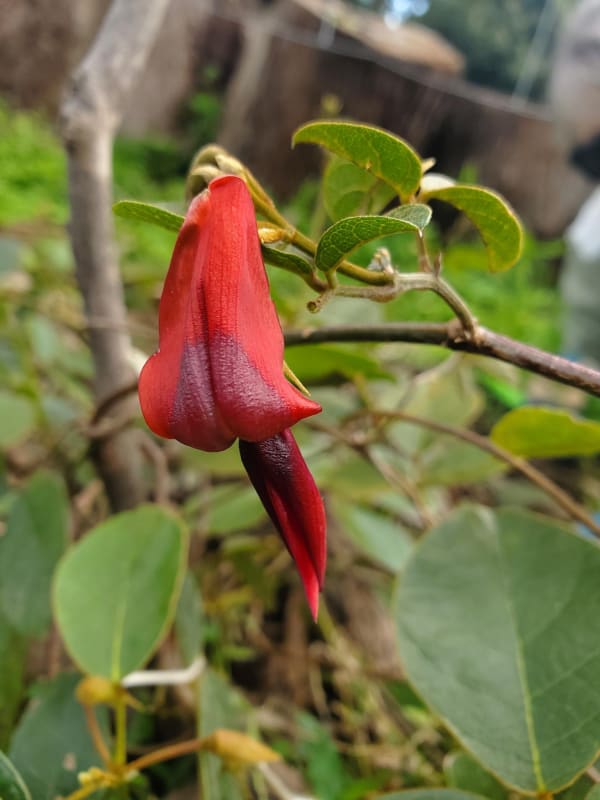Running Postman! What images does that conjure?
For those of older generations, perhaps the thought of a postie on foot, running from house to house to deliver letters containing important messages, perhaps pushing through sleet and snow. Possibly wearing a colourful red and yellow uniform? I'm not sure, and I have to say that the common name of the beautiful local climber Kennedia rubicunda has me pretty mystified.
On the upside, it's a lovely plant and extremely hardy and adaptable. You can see it around the Illawarra region in almost all local plant communities, where it will pop up in sunny spots on the edges of eucalypt forest or rainforest or in among coastal scrubland without a care in the world. And when it's in flower, as it is now, it looks spectacular.

Running Postman is an excellent garden plant, due to its toughness and versatility. It copes with a range of soils, including sandy and clay soils, but generally prefers part or even full sun. You won't see it deep in the rainforests of the escarpment.
Another positive of Running Postman is that, as a member of the Fabaceae family, it is able to fix (store) nitrogen from the atmosphere, something that most plants cannot do; it means they can thrive in situations where limited soil nitrogen is a limit on plant growth for other species. The nitrogen fixed by a Running Postman, or other Fabaceae plant, is then available to other plants once it dies.

Running Postman plants are flowering profusely right now, in woodland, coastal scrub and healthlands right across the region. Get out and see them while you can.
You might be lucky enough to spot them growing with the equally attractive Purple Coral-pea (Hardenbergia violacea), with its purple inflorescences, and Snake Vine (Hibbertia scandens), which has yellow flowers.





